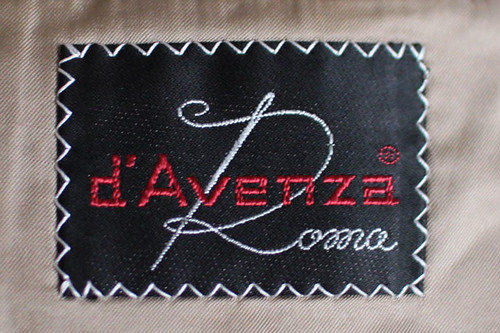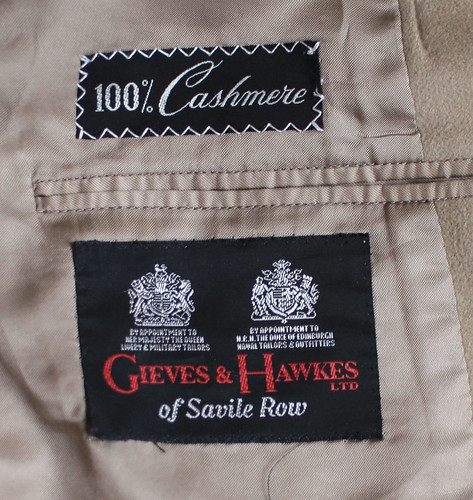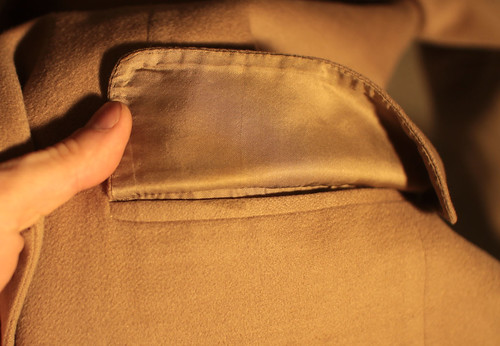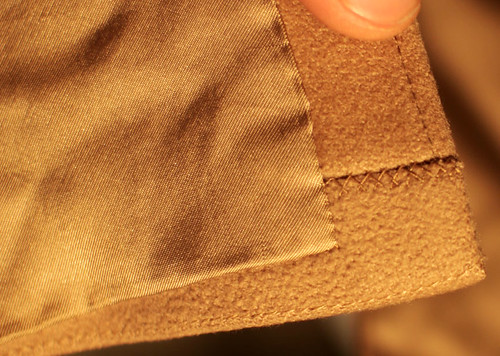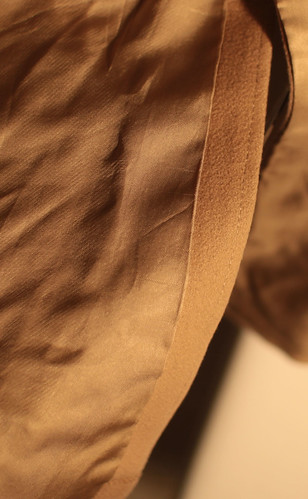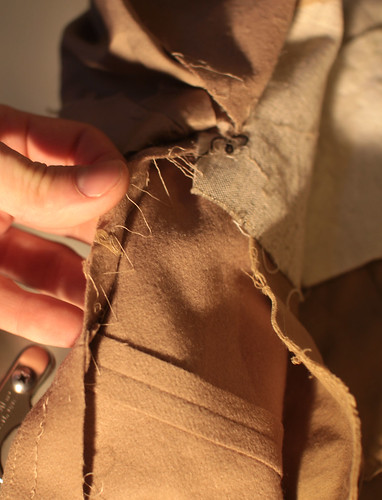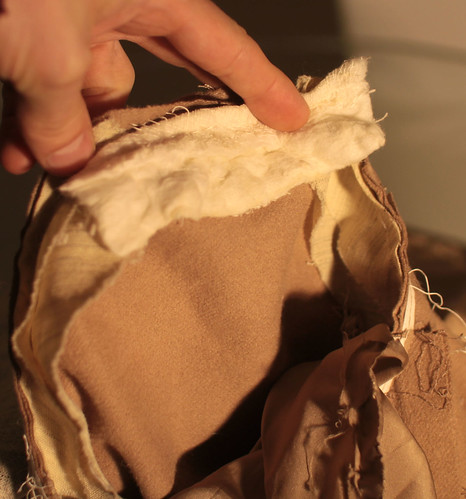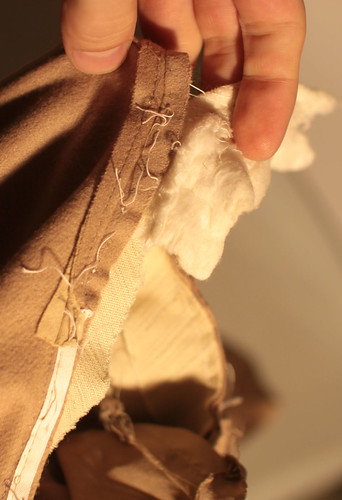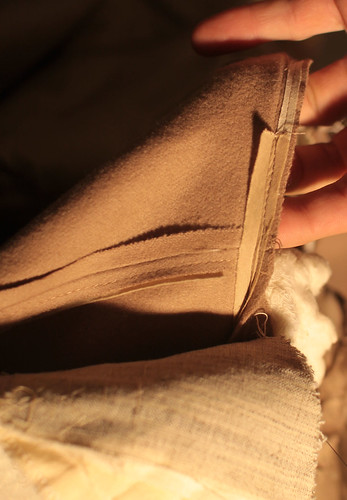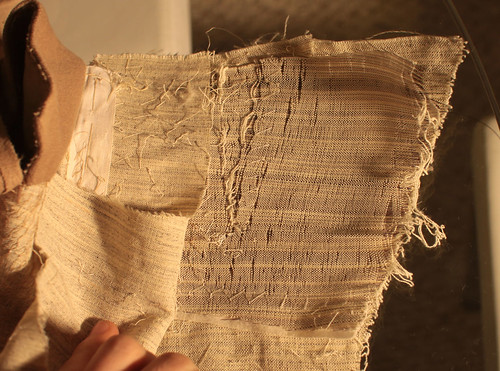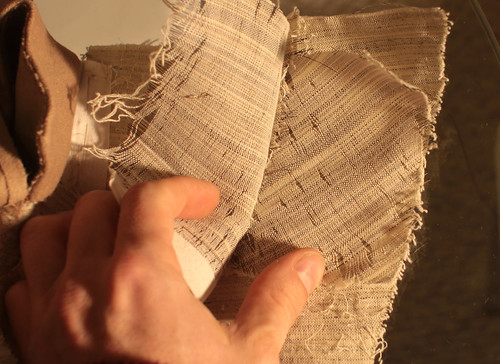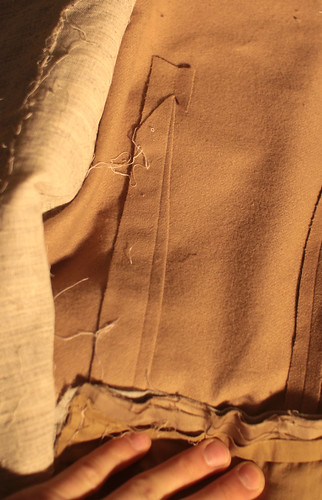As promised, a vintage Chester Barrie coat courtesy of RSS. Thank you.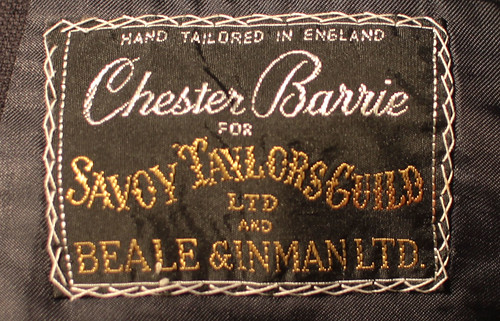
In the previous dissection we looked at a garment made in Italy by D'Avenza, a shop that was set up by Chester Barrie and thus has certain similarities in make. They are not the same age so some of the differences might be attributed to changes in production methods, but it is interesting (to me) nonetheless.
Right off the bat, the un-jetted pocket flap which, to date, we have seen only on Oxxford, D'Avenza, and now CB, though a reader pointed out that their father's suits from Hart Schaffner Marx were also done like this, though they date from a period in which the buttonholes were also done by hand, which is going back a fair bit.
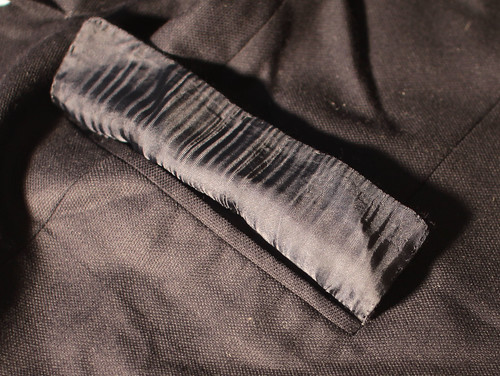
Another similarity between the two shops is that the top buttonhole (the one which is meant to be buttoned on a 2-button coat) has been worked, by hand, on both sides, while the lower one has been done only on the right side, which is the usual practice. Here is the back of the upper buttonhole-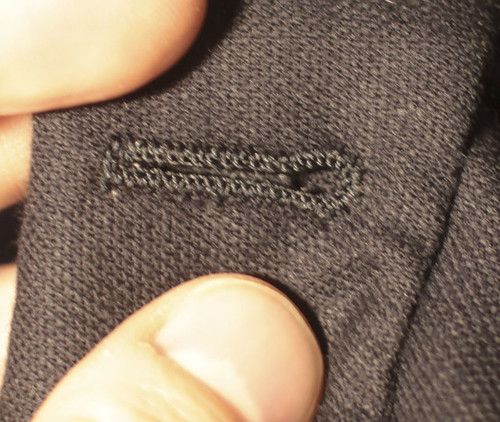
And the back of the lower one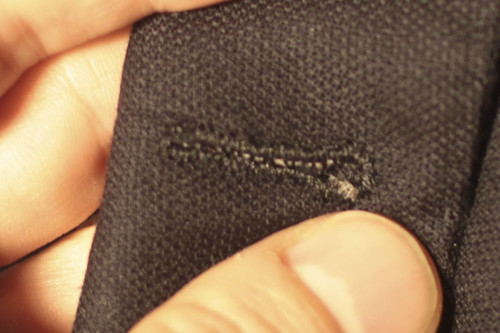
Really need to get proper lighting and a macro lens.
Normally I love cutting open these garments to have a look at the internal workings, but for the first time, I was really hesitant, because the finishing work on this garment is the absolute best I have ever seen. Ever. While the D'Avenza coat's vent and hem had been finished with a felling machine, the lining of this coat has been entirely finished by hand, and the stitching is invisible. Normally little pricks of silk thread can be seen along the edge of the lining, which is the easiest way of spotting whether the lining has been done by hand or by lockstitch machine, but the work is so fine that no stitches are visible along the lining edge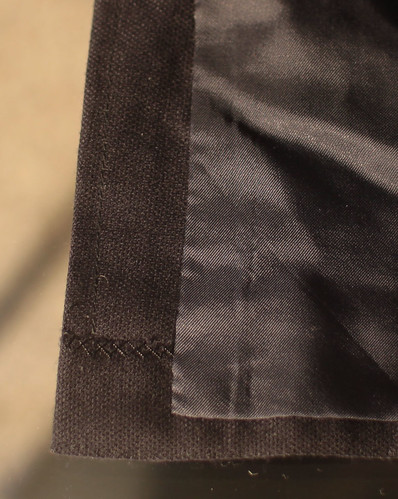
The hem has been done by hand as well
The armhole is equally neat, though these photos really don't do it justice.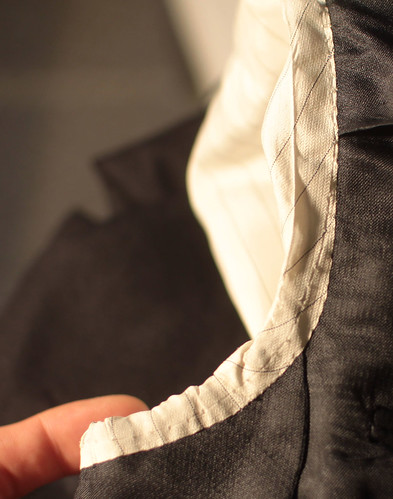
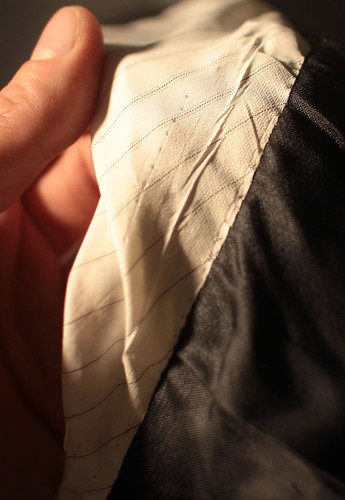
It really pained me to cut apart such fine handwork, but it had to be done.
I doesn't show up in photos, but the undercollar has been set by hand, and the top collar was hand-drawn as well.
The hem and vents have been taped and felled in the same was as the D'Avenza coat, but the facing and inside breast pocket have been felled to the canvas by hand rather than blindstitch machine which is more typical. Even Kiton, who claim to do everything by hand, do this step by machine.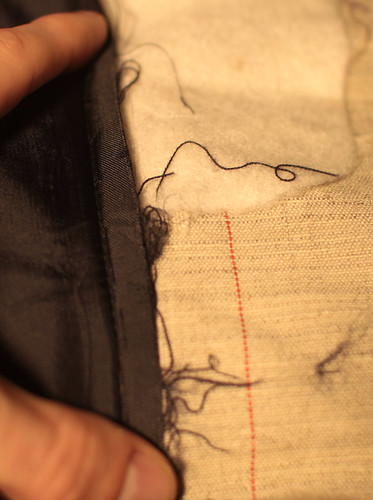
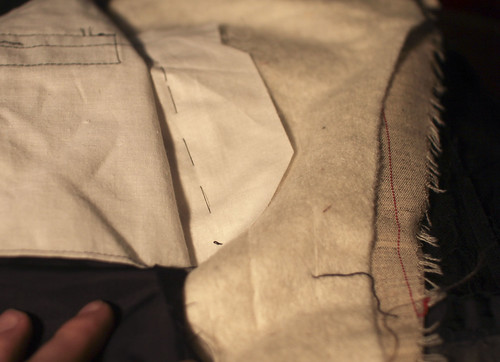
The sleeve head wadding is made with two pieces of bias-cut canvas, front and back, which have been folded over to reverse the direction of the hairline, and there is a piece of needle-punch felt in the top. Of all the types of felt made for sleeve wadding, I feel that this is the best since it is stable and won't disintegrate like the cotton kotex wadding, and the scrim (the white threads running through the back of it) make this far lighter and softer than the foam-backed needle-punch which is cheaper and thus more commonly found.
The chest felt is fairly meaty, and we can see that the lapel has been padded with a manually-operated machine, not the automated type, which would produce neat, even rows of stitching. The coat front has been pad-stitched using the jump-baste machine, which is my preferred method, instead of a zig-zag or blindstitch machine.
We can see that the armhole was taped before joining the forepart and the side body; it's now more common to join those two pieces and then tape the armhole in one go.
Rather than having haircloth all the way down the chest, the softer and less-expensive wrapped hair canvas has been used. Note the additional cut is the side of the chest which adds a bit more shape.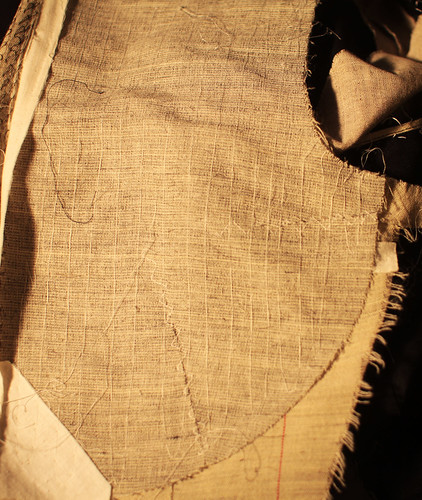
A small strip of canvas has been added to the scye to stabilize it.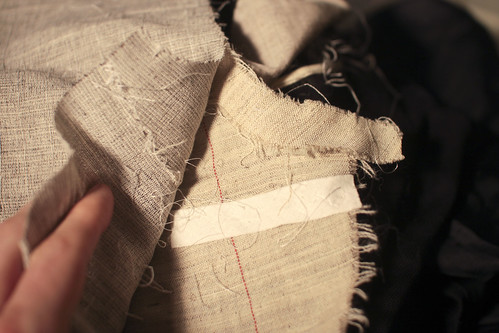
A piece of rather nice haircloth in the shoulder has cuts on either side to help build in the natural, forward-pitch of the shoulder and a bit of a concave line.
This is certainly one of the best ready-made garments I have seen to date, particularly in the bang-for-your-buck equation. While Oxxford does far more by hand, a lot of those steps, in my opinion, add no value and you are paying a lot of extra money for something which could be done, with the same or better results, by machine. It's just a shame that the quality level today, while still high, is not quite to this standard anymore.
I'm almost tempted to put this coat back together again.
Almost.


